Spanning various backgrounds, class years, and career paths, these seven women changed the face of Penn Vet and veterinary medicine.
They spoke candidly of their successes and challenges, breaking into a field that has shifted dramatically in just a few decades. Hearing each of their stories first hand, similar traits emerged: courage, diligence, and an unshakeable commitment to the profession, despite naysayers and obstacles. The meaningful encouragement of mentors, both male and female, was a repeating motif.
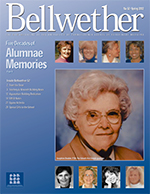 No story about trailblazing Penn Vet women would be complete without recognizing Dr. Josephine Deubler, V’38, the School’s first female graduate and the first woman to join the faculty. Dr. Deubler was the cover subject of the Spring 2002 issue of Bellwether featuring distinguished alumnae (No. 52). We encourage you to learn more about her by visiting the Bellwether online repository at repository.upenn.edu/bellwether.
No story about trailblazing Penn Vet women would be complete without recognizing Dr. Josephine Deubler, V’38, the School’s first female graduate and the first woman to join the faculty. Dr. Deubler was the cover subject of the Spring 2002 issue of Bellwether featuring distinguished alumnae (No. 52). We encourage you to learn more about her by visiting the Bellwether online repository at repository.upenn.edu/bellwether.
We hope these stories spark a conversation about the many pioneering Penn Vet women, including those we have yet to feature.
Dr. Olive Kendrick Britt
First female intern-resident in Penn Vet’s large animal clinic, 1959
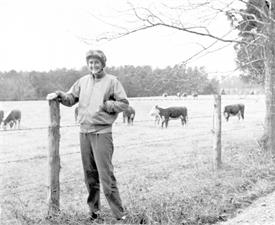 The late Dr. Olive Kendrick Britt broke ground as a woman in equine medicine and surgery—a field she didn’t even enter until her forties. Growing up on a ranch, she deferred her dream of becoming a veterinarian for many years. After graduating from the University of Georgia College of Veterinary Medicine at age 42, she was accepted in 1959 as the first female intern-resident at Penn Vet’s large animal clinic. Only one veterinary school graduate was accepted annually to the competitive position.
The late Dr. Olive Kendrick Britt broke ground as a woman in equine medicine and surgery—a field she didn’t even enter until her forties. Growing up on a ranch, she deferred her dream of becoming a veterinarian for many years. After graduating from the University of Georgia College of Veterinary Medicine at age 42, she was accepted in 1959 as the first female intern-resident at Penn Vet’s large animal clinic. Only one veterinary school graduate was accepted annually to the competitive position.
Britt’s story is inextricably linked to that of the late Dr. Charles Raker, a founding father of New Bolton Center, where he served as Chief of Large Animal Surgery for nearly 30 years and championed female veterinarians. Raker went to bat for Britt—first during the internship admission process and later on, with clients reluctant to see a woman vet.
In the book Women in Veterinary Medicine: Profiles of Success by Drs. Sue Drum and H. Ellen Whiteley (Iowa State University Press), Britt noted, “Although I had many fine teachers, Dr. Charles W. Raker [V’42] is the man most responsible for my success. He fashioned in me the knowledge and confidence to become an accomplished equine practitioner.”
Accomplished, indeed: Britt would go on to become the first female equine practitioner in Virginia and the first woman appointed to the Virginia Board of Veterinary Medicine. With Dr. Milton Kingsbury, she established the Woodside Equine Clinic and cared for the legendary racehorse Secretariat.
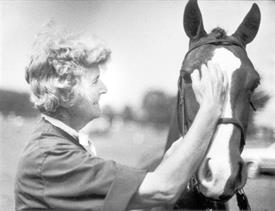 Like Raker, Britt nurtured aspiring veterinarians, including Dr. Laura Gay Senk. An accomplished equestrian, Senk was riding in a Richmond horse show in the late 1960s when she met Britt and Kingsbury.
Like Raker, Britt nurtured aspiring veterinarians, including Dr. Laura Gay Senk. An accomplished equestrian, Senk was riding in a Richmond horse show in the late 1960s when she met Britt and Kingsbury.
“They were the veterinarians for the show,” recalled Senk, speaking by phone from her home on Long Island. “I followed them around at the show, and they were gracious enough to allow me to come to their clinic and stay to observe and learn on many occasions.”
“Dr. Britt was very methodical and thorough. She explained everything clearly to the client and took time to explain things to me,” she continued.
Senk ultimately enrolled in vet school at Georgia, where she became good friends with classmate Dr. Corinne Sweeney—future Associate Dean of New Bolton Center. One day, Britt returned to speak at her vet school alma mater. “They held her lecture in our main lecture hall, which was quite large. When I opened the door and walked in, it was standing room only,” Senk said. “Her reputation preceded her, and many people wanted to be in the presence of a legend. I felt very appreciative and honored that I had the opportunity to work with her.”
Dr. Katherine A. Houpt
Penn Vet Class of 1963
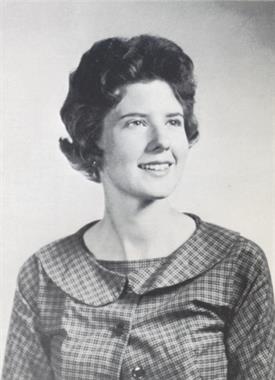 Dr. Katherine Houpt almost didn’t make it to Penn Vet. “I had a boyfriend who didn’t approve,” she explained. “I was accepted and turned it down, and I spent the whole summer crying.”
Dr. Katherine Houpt almost didn’t make it to Penn Vet. “I had a boyfriend who didn’t approve,” she explained. “I was accepted and turned it down, and I spent the whole summer crying.”
After being readmitted in August, “I thought I was taking a vow of celibacy when I went to vet school,” Houpt said. “The mentality at the time was that no guy wanted a girl better educated or smarter that he was.”
As it so happened, Houpt would soon meet her husband-to-be and future research collaborator. “They assigned a faculty member to show us around the Penn campus—and three years later, I married that guy!” she said. Dr. T. Richard Houpt, V’50, wasn’t threatened by her smarts. “He taught physiology, and I studied hard because I wanted to impress him.” For their honeymoon, she quips, “We visited veterinary schools in the U.S. and Canada.”
Houpt was one of five women to graduate in 1963. “I really had a good time in vet school,” she said. Two of her classmates—the late Drs. Joan O’Brien and Jeffie Roszel—had enrolled in their thirties. “Joan and Jeffie were older. They were ladies. I never heard a dirty joke. We were treated nicely.”
“I always make a big point of saying I’m a VMD,” Houpt noted. “Penn did accept me, and many other vet schools weren’t accepting more than two women.” She would earn not only a VMD but, in 1972, a PhD in biology from Penn, followed in 1993 by Board Certification as a charter diplomate of the American College of Veterinary Behaviorists (ACVB). She served as ACVB president in 1999.
.jpeg?sfvrsn=455616ba_2) Houpt became a leading researcher in animal behavior and welfare, authoring numerous papers as well as the widely used textbook Domestic Animal Behavior, and lecturing around the world. She is most proud of her studies in equine behavior; in particular, the physiological basis of equine ingestive and maternal behaviors.
Houpt became a leading researcher in animal behavior and welfare, authoring numerous papers as well as the widely used textbook Domestic Animal Behavior, and lecturing around the world. She is most proud of her studies in equine behavior; in particular, the physiological basis of equine ingestive and maternal behaviors.
Although she became the first woman appointed to a full professorship at Cornell’s College of Veterinary Medicine, her initial application for tenure, despite impressive credentials, was not approved. “That was probably the most challenging year of my life,” she said, noting that in the late 1970s and early 1980s “there was still a lot of prejudice against women. But as soon as the barriers came down, they just flocked into the profession.”
In 1978, she wrote about this trend in the article “Equal Opportunity in Action: Veterinary Medicine, A Success Story” for Veterinary Medicine/Small Animal Clinician. She also co-wrote two in-depth editorials for The Cornell Veterinarian; the first delved into the history of women in veterinary medicine, while the second explored the field’s current status and promising future.
At Cornell, she served as a Professor from 1989 to 2005, followed by four years as James Law Professor of Animal Behavior. She has been Professor Emeritus of Animal Behavior since 2010.
“Whenever a woman got tenure, I’d have a party for her. I always tried to do things like that,” Houpt said. “I really tried to help women.”
Dr. Jill Beech
Penn Vet class of 1972
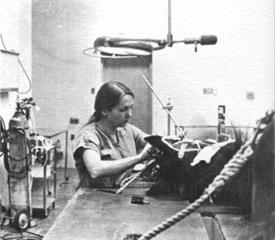 On the wall of the hospital at New Bolton Center hangs a plaque honoring Dr. Jill Beech. Her photo caption reads: “Recipient of 2011 AAEP Educator of the Year Award. 39 years as Revered Clinician, Teacher and Scholar, 1972 – 2011.”
On the wall of the hospital at New Bolton Center hangs a plaque honoring Dr. Jill Beech. Her photo caption reads: “Recipient of 2011 AAEP Educator of the Year Award. 39 years as Revered Clinician, Teacher and Scholar, 1972 – 2011.”
In light of her distinguished career, it can be hard to imagine Dr. Beech once feeling out of place at New Bolton Center. “Now, there are more women out here than men. Back then, you were a real minority. I might be the only woman in my group of 12 students in a rotation. And certain clinicians would avoid doing anything with you if you were a woman,” she recalled.
After undergraduate years at UC Davis, Beech arrived at Penn Vet having never been to Philadelphia. She is candid in her recollections of those years. Some clients and trainers did not want a woman to look at their animals. And there were fewer drugs available to tranquilize large animals—so, as a woman, you “really had to rely on guile and intelligence,” she said.
She persevered and found allies at Penn Vet, including Drs. Al Merritt, William Boucher, and Charles Raker. She recalled a now-legendary story about Raker bringing her and two other female interns to the yearly meeting of the American Association of Equine Practitioners: “Dr. Raker was a very highly regarded figure within the organization. He would greet his colleagues and say, ‘I want you to meet my interns,’ and they would immediately look past us, looking for guys. Dr. Raker would say, ‘No, these are my interns!’ The three of us thought he took some delight in doing so!”
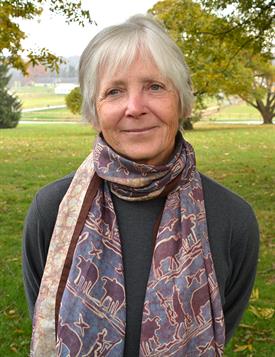 Another mentor was Dr. Robert Whitlock, who she said “really encouraged women and helped them with their research.” Coincidentally, in 2010, Beech received the Robert Whitlock Award, presented to the faculty member who demonstrates the most dedication to mentoring young faculty.
Another mentor was Dr. Robert Whitlock, who she said “really encouraged women and helped them with their research.” Coincidentally, in 2010, Beech received the Robert Whitlock Award, presented to the faculty member who demonstrates the most dedication to mentoring young faculty.
Beech served as an instructor of large animal medicine at Penn Vet starting in 1976; received the title of Professor in 1993; and was named the Georgia and Phillip Hofmann Chair in Medicine and Equine Reproduction in 2001. She promoted the clinical services of ophthalmology and neurology at New Bolton Center, and later focused her research on equine pituitary disease and muscle dysfunction. She has published numerous papers in refereed journals, and she has edited and contributed to major equine medicine textbooks. She retired from Penn Vet in July 2011.
In honoring Beech with a distinguished educator award, the American Association of Equine Practitioners noted that she “propelled the careers of countless leaders in the equine veterinary profession.” For Beech, paving the way for others has been just as important as forging her own path.
“I worked hard and no doubt jostled some people along the way. Even though there were few of us at that time, I think it is important to remember that there were other women who preceded me in equine veterinary medicine. One always stands on someone else’s shoulders,” she said.
Dr. Marilyn Weber
Penn Vet Class of 1975
Penn Vet’s Alumni Award of Merit in 2011. New Jersey VMA’s Veterinarian of the Year in 2006. Jersey Shore VMA’s Veterinarian of the Year in both 2000 and 1988.
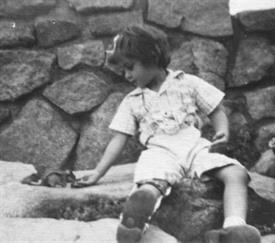 These are just some of the honors Dr. Marilyn Weber has received throughout her veterinary career. And she traces it all back to The Noisy Book by Margaret Wise Brown—a children’s story about a dog who had to visit the vet. “My mother tells a story that, ever since I saw that book, that’s what I wanted to do.”
These are just some of the honors Dr. Marilyn Weber has received throughout her veterinary career. And she traces it all back to The Noisy Book by Margaret Wise Brown—a children’s story about a dog who had to visit the vet. “My mother tells a story that, ever since I saw that book, that’s what I wanted to do.”
Weber was undeterred even by permanent paralysis from poliomyelitis, which requires her to use braces and crutches to get around. She credits her parents with supporting her veterinary ambitions and instilling a resilient, can-do mentality. And she found a mentor in the family’s vet, Dr. Lloyd Kornblatt, V’47, working in his office in her hometown of Metuchen, New Jersey, during high school. “He was the one who made me believe that I could become a veterinarian,” Weber said.
Her guidance counselors, however, discouraged her from applying to veterinary school. “It made me more stubborn,” Weber laughed.
At Penn Vet, nearly two decades before the Americans with Disabilities Act of 1990, “a lot of places didn’t have elevators. I remember when we had anatomy, we had to climb up three or four flights of stairs.” She recalls being treated like her classmates—which is how she prefers it.
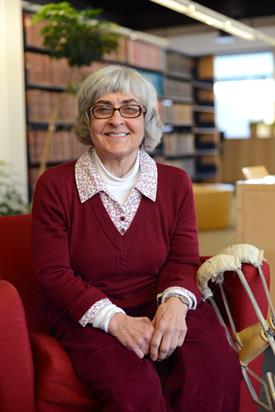 “I don’t consider myself a handicapped person. I consider myself a veterinarian first,” Weber said emphatically.
“I don’t consider myself a handicapped person. I consider myself a veterinarian first,” Weber said emphatically.
She did an externship in lab animal medicine, but her heart wasn’t in it. “I didn’t really want to sit at a desk or at a bench the whole time. To me, clinical practice was more exciting,” she said.
At the Penn Annual Conference in 1975, she interviewed with Dr. Thomas Sollas, V’56, and took a job with him at Sea Girt Animal Hospital in New Jersey. At the time, she was just the second woman to join the Jersey Shore Veterinary Medical Association. “Now, it’s more women than men,” she said.
Weber purchased the practice from Sollas in 1988 and ran it for the next 13 years. “I did a lot of cat work. I’d see large dogs. And I took care of a couple goats,” she said. In 2009, she received the SPCA of Monmouth County’s Three Wags Award for her tireless work with strays.
Weber is a founding member of the Dean’s Alumni Council at Penn Vet. She has sponsored several full and partial Opportunity Scholarships and is invested in mentoring the next generation of veterinarians. Asked why she stays involved at the School, she responds without hesitation: “To give back to my profession.”
Reflecting on her legacy, she noted, “I think I paved the way in making people realize that people like me, who may not be 100 percent physically well, could still have an impact in veterinary medicine. And to me, that means a lot.”
Dr. Mattie Hendrick
Penn Vet Class of 1978
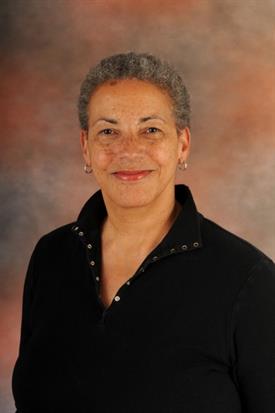 Dr. Mattie Hendrick is known as a visionary thinker, noted for providing the first link between vaccination and the development of fibrosarcomas in cats. And she credits Penn Vet with welcoming and fostering her nontraditional, interdisciplinary approach—dating back to her undergraduate years at Vassar, when she was deciding whether to pursue the profession.
Dr. Mattie Hendrick is known as a visionary thinker, noted for providing the first link between vaccination and the development of fibrosarcomas in cats. And she credits Penn Vet with welcoming and fostering her nontraditional, interdisciplinary approach—dating back to her undergraduate years at Vassar, when she was deciding whether to pursue the profession.
“I chose veterinary medicine, and I think I chose Penn Vet at the same time, because my interests had to do more with looking at animals in a comparative biology and behavior way rather than a clinical way. I came from a liberal arts background and majored in psychology. Penn Vet seemed to suit what I wanted to do,” she recalled.
While at Penn Vet, she had an “a-ha” moment during a summer internship in comparative pathology. “I knew immediately that’s what I wanted to do,” Hendrick said, adding, “Pathology even back then was taught by some of the best people at Penn Vet.” She was also inspired by pioneering Penn Vet biochemists Drs. Mary Dwight McNair Scott and Adelaide Delluva, who she described as “a strong role model for many women in the vet school.”
As a female student, “I never felt any oppression or discrimination or feeling inferior in any way,” Hendrick said. “In my opinion, we sort of dominated the class!”
She served on the Penn Vet faculty from 1985 until 2007, rising to rank of Full Professor, but she recalled inequalities she didn’t experience as a student. “Some of it was outright, some of it was undercover,” she said. Resolute, she trained countless students and residents, headed the Laboratory of Pathology & Toxicology, and served as Director of the Histopathology Laboratory for five years.
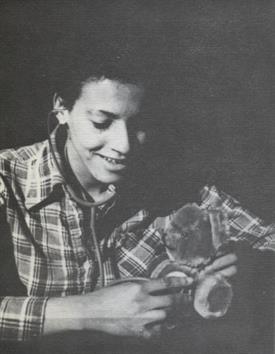 Remembering how she came upon her groundbreaking discovery in the 1980s, Hendrick said, “I was reading many biopsies and started to see trends. I noticed that I was seeing this particular lesion over and over, what looked like a vaccination reaction. Six or seven months later, in the same sites, were these tumors,” she said. “My chairman at that point was Dr. Alan Kelly. He was very supportive of me and encouraged me to do more research in it.”
Remembering how she came upon her groundbreaking discovery in the 1980s, Hendrick said, “I was reading many biopsies and started to see trends. I noticed that I was seeing this particular lesion over and over, what looked like a vaccination reaction. Six or seven months later, in the same sites, were these tumors,” she said. “My chairman at that point was Dr. Alan Kelly. He was very supportive of me and encouraged me to do more research in it.”
Kelly connected her with Penn’s medical school pathologists to further investigate the pattern, which led to a number of co-authored papers. Hendrick became Chair of the Epidemiology/Pathology Subgroup of the Vaccine-Associated Feline Sarcoma Task Force, a joint endeavor of the American Veterinary Medical Association, American Animal Hospital Association, American Association of Feline Practitioners, and the Veterinary Cancer Society.
Winner of the Dean’s Award for Leadership in Education, Hendrick noted that Penn Vet encourages veterinary leaders in various fields. “I really do believe Penn is more progressive than a lot of other schools. They’ve always supported people being self-starters and entrepreneurial.”
Dr. Linda Rhodes
Penn Vet Class of 1978
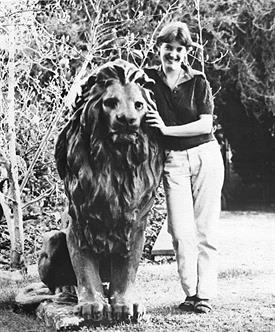 Looking back at a career that has taken quite a few unexpected turns, Dr. Linda Rhodes laughs, “It was quite a ride!”
Looking back at a career that has taken quite a few unexpected turns, Dr. Linda Rhodes laughs, “It was quite a ride!”
After turning down a PhD program in theoretical mathematics, she discovered a passion for veterinary medicine while living on a California commune, milking goats. However, “Back in 1973, when I was applying, most vet schools didn’t admit that many women,” Rhodes said, adding, “You had to apply in the state of which you were a resident.”
She had heard that Penn Vet was “gender neutral.” A native of New York, she moved across the state line to the small town of Hop Bottom, Pennsylvania, to become a resident while completing pre-vet courses.
At Penn Vet, “We had a number of strong women leaders, which was unusual then,” she said, pointing to Drs. Joan O’Brien, Elaine Hammel, and Jill Beech as mentors. Hammel, who was teaching field service, was “in her truck, helping cows, and that’s what I wanted to do,” Rhodes said.
Even after graduating fourth in her class, Rhodes struggled to find a job as a dairy cattle veterinarian. “I had 17 interviews. I heard comments like, ‘My wife isn’t comfortable with me riding around in the truck with a woman,’ and ‘Physically women can’t do this kind of work,’” she said.
After a short, reluctant stint in a small animal practice, she was finally accepted to a clinical internship at Utah State University. She continued working locally after the internship, focusing on herd health. At the time, she was the only female large animal veterinarian practicing in Utah.
Her path led back east to Cornell, where she was asked to teach part-time in the bovine palpation lab. After a sabbatical teaching embryo transfer to veterinarians in Israel, where she was the only female large animal veterinarian in the country, she was accepted to Cornell’s PhD fellowship program in physiology. “I could do research on ruminants, particularly in reproduction. I enjoyed being in the library and the laboratory again,” Rhodes said.
After earning her PhD, Rhodes pursued a new career direction: pharma. “I saw an advertisement for a pre-clinical biology research position at Merck. They were delighted with my background. There was a real need for people with broad biomedical understanding who could do research on new drug targets.”
She worked on developing human drugs using animal models. “Then, Merck formed a joint venture—an animal health division called Merial. I headed up the clinical research department, focused on drugs for cattle, which was right up my alley,” she said.
In 2001, Rhodes left Merial to co-found AlcheraBio LLC, a consulting and contract research organization [CRO] focused on the animal health industry. “By the time we sold the company, we were running clinical trials for all top 10 animal health companies in the country as well as half a dozen companies from Europe,” she explained. “We pioneered an industry. There was not a big, full-service animal health CRO in the U.S. prior to AlcheraBio.”
Rhodes was about ready to retire when she received an offer she couldn’t refuse: serving as the founding CEO, and currently, as Chief Scientific Officer at Aratana Therapeutics. “I saw this as an opportunity that would completely change the animal health industry. The venture capital investors had discovered animal health and were willing to invest. We have over 20 drugs in development. Aratana has grown exponentially,” she said.
For Rhodes, several paths in veterinary medicine have converged with remarkable synergy. And she provides guidance to women who are finding their way to leadership positions in the animal health industry. “We still need a lot of encouragement for women as they rise up in their careers and encounter less pay for equal work, for example,” she said.
Dr. Darcie Stolz
Penn Vet Class of 1982
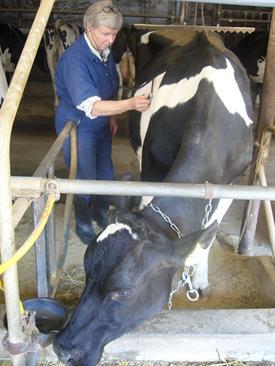 As the commencement speaker for Penn Vet’s Class of 2009, Dr. Darcie Stolz left the graduating class with this inspiring thought: “If a girl from the suburbs, who knew nothing about agriculture, could end up being the first woman food animal practice owner in the heart of dairy country in Pennsylvania, you can do anything.”
As the commencement speaker for Penn Vet’s Class of 2009, Dr. Darcie Stolz left the graduating class with this inspiring thought: “If a girl from the suburbs, who knew nothing about agriculture, could end up being the first woman food animal practice owner in the heart of dairy country in Pennsylvania, you can do anything.”
Stolz exemplifies perseverance. Both her high school guidance counselor and college advisor strongly discouraged her from pursuing veterinary medicine as a career. But she steadfastly followed her calling. “I loved animals ever since I was a little girl,” she said.
As an undergraduate at Penn State, Stolz had every intention of becoming a small animal vet. But she volunteered at the sheep barn during lambing season, and that changed everything. Large animal medicine “was just a whole new world. I really liked the people and being outdoors. The lifestyle seemed to fit me.”
With signature stick-to-itiveness, she applied twice to Penn Vet before being accepted on her third try. “I graduated in 1982, at a time when women were still in the minority, and women interested in large animals were few and far between,” Stolz noted. “In fact, in my class of 103 students, I was the only woman who wanted to focus on bovine medicine.”
While she found supportive mentors at Penn Vet, going out into the workplace was a different story. Many large animal practices would not even grant her an interview. She finally found a job working in a two-person large animal practice in Lancaster County, Pennsylvania. “I was very fortunate that once I did get hired, [my boss] was a good mentor and helped me get my feet on the ground,” Stolz said.
She also had to earn the trust of the local Amish population. “My big break was when I saved the Amish bishop’s cow from death. That catapulted my career within the Amish community,” Stolz said. “I initiated preventative herd health programs, beginning with
scheduled herd checks.”
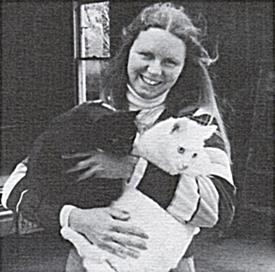 In 1989, Stolz purchased the dairy, beef, and small ruminant portion of the practice, and she has had a thriving business since. “You’ve got to build up that ‘trust account’ like a bank account,” she said, adding, “As a woman, it took longer and you had to work harder.” She credits her husband for his unwavering support. The demands of juggling practice ownership with raising children “take a spouse who is behind you 100 percent.”
In 1989, Stolz purchased the dairy, beef, and small ruminant portion of the practice, and she has had a thriving business since. “You’ve got to build up that ‘trust account’ like a bank account,” she said, adding, “As a woman, it took longer and you had to work harder.” She credits her husband for his unwavering support. The demands of juggling practice ownership with raising children “take a spouse who is behind you 100 percent.”
Stolz is the Production Animal Practice Veterinarian At-Large representative to the Pennsylvania Veterinary Medical Association Board of Trustees, and she served on the American Association of Bovine Practitioners Board of Directors for six years. She presented the talk Families, Females and Food Animals: Can We Do It All? at the Association of American Veterinary Medical Colleges’ annual meeting. And she considers speaking at the Penn Vet commencement “one of the highlights of my career.”
All of this might seem impossible to a girl discouraged from pursuing a passion for veterinary medicine. But as Stolz noted in that commencement address, “Remember that even the most unlikely goals can be accomplished. I am living proof of that.”